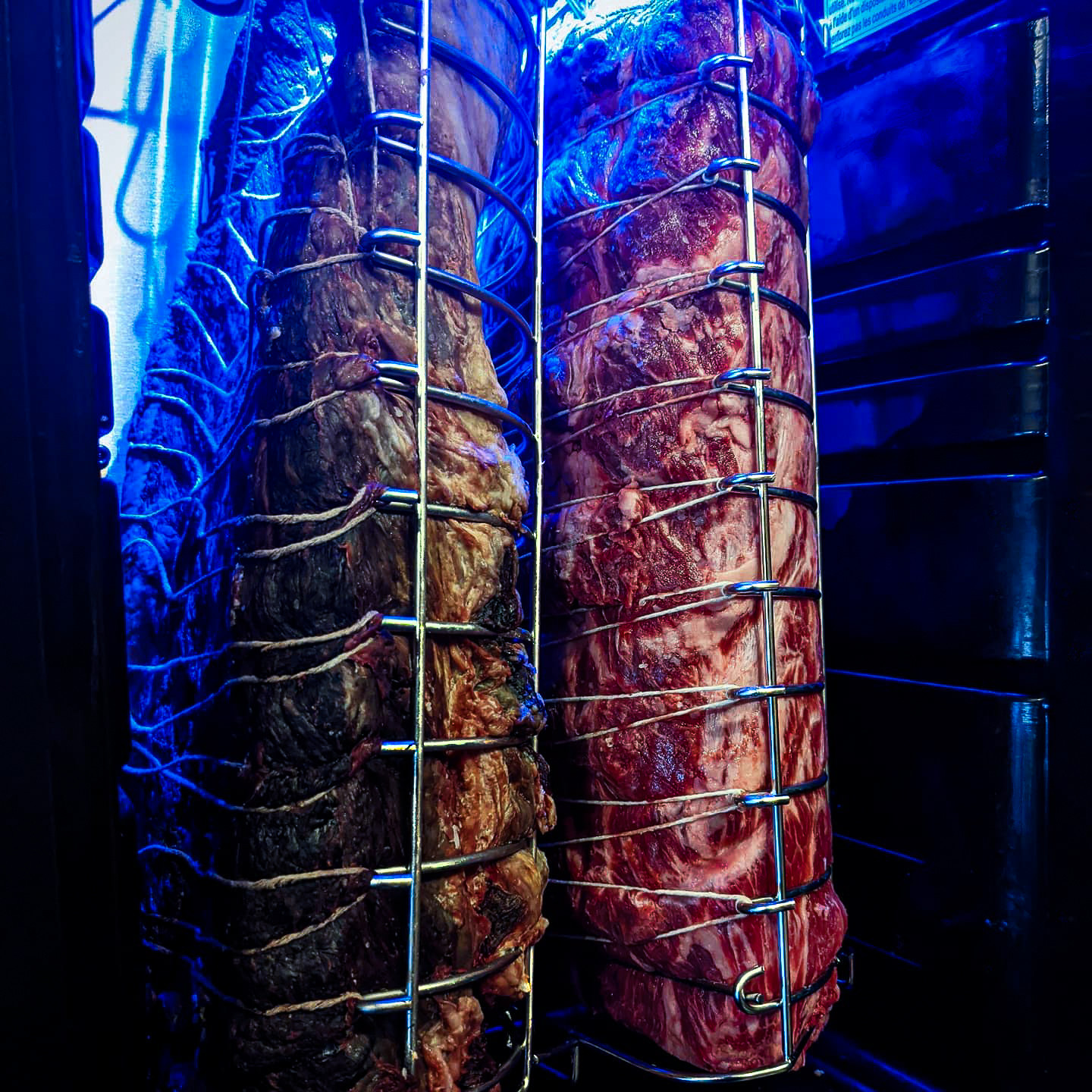July 27, 2021
Have you ever heard someone ask whether or not to truss their subprimal? You probably have, and like many, wondered what that even is, or what the benefit of trussing is. Well, in short, trussing is absolutely the most effective way to hang your subprimal. Keep reading if you want to know how and why.
When you think about trussing, you most likely think about famous chefs trussing their meat before cooking, not dry-aging. The principle behind it is essentially the same: when you truss before you cook, you’re trying to maintain the shape of the meat, avoiding potential expansion and misshapen results. The meat can spread out, or in some cases, burst, which isn’t great for a presentable dish. Chefs will also truss meat that they have stuffed to keep it together, or use trussing as a method to promote even cooking.

Trussing has very similar benefits when it comes to dry-aging. When you’re dry-aging, you’re removing surface moisture from the muscle, and promoting the natural enzymes in the muscle to break down connective tissue, giving you a more concentrated flavour and tender texture. But in that process, your subprimal will experience uneven volume loss and shape change.
Imagine a sponge that’s soaked with water that you’ve set out on your counter to dry: as time goes on, moisture in the sponge will be released, and the sponge will begin to shrink until it’s dry to the touch. Your subprimal will behave the same way. As moisture moves out of the subprimal, the meat has a tendency to “flatten out”. Your ribeye roast can end up looking more like an oblong NY Strip, and your steaks will be thinner (more like chicken strips). And while a bone-in subprimal may be protected against the deformation issue, it’ll experience the same kind of volume loss.

Trussing allows you to create an even surface area and volume throughout your subprimal. It’ll reduce the surface area being exposed to air, resulting in less internal volume loss, and prevent your subprimal from shrinking to an uneven, harder to work with shape.
Now for the “how”. Some people are happy simply cutting individual strands of butcher’s twine and tying knots around the meat, while some prefer a fancier method of looping one long piece of twine the length of the subprimal, but either is equally effective. The easiest way to truss, by far, is by using your SteakAger Truss Rack by simply interesting the meat in the rack and lacing the twine around each hook until your subprimal is secure.

No matter the method, the end goal is to produce a tightly wrapped piece of meat (without damage) that has a similar thickness all the way through. Successfully doing this will yield more consistent cuts of meat when processing, and, ultimately, cuts of meat that cook more evenly throughout. Looking to buy a SteakAger, browse our products here or contact us for more information.
